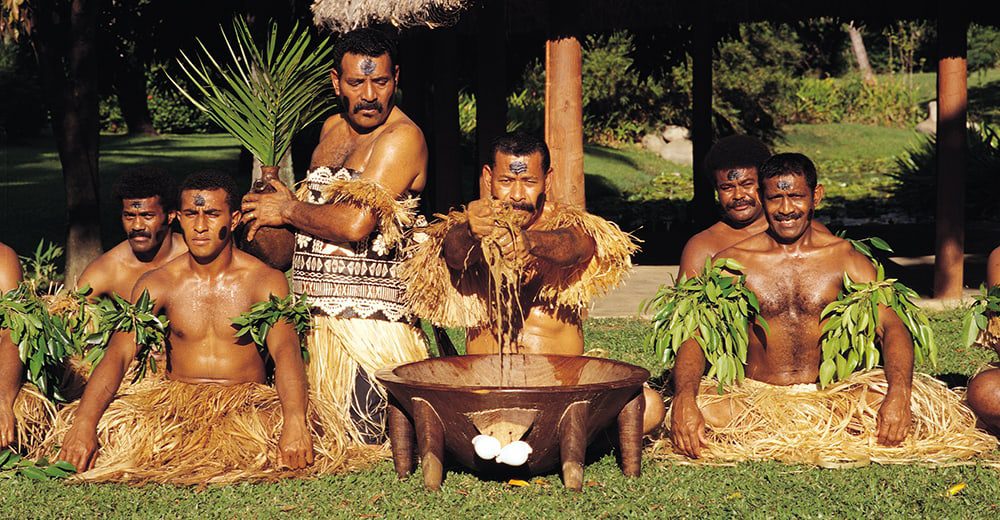Forget beer, Kava is the drink of choice for Pacific Islanders.
Pass through any village in Fiji and you’ll find locals gathered around sipping the milk-like liquid from half coconut bowls (bilo).
Said to have calming effects and create a sense of well-being, this ceremonial narcotic might account for the concept of ‘Fiji time’ and the slow, relaxed pace of the islanders.
What is it?

Kava comes from the root of the yaqona (piper methysticum) bush, a relative of the pepper plant. It is ground up and then strained with water to form a powder that is mixed with water before being drunk.
Traditional uses

Kava is used for medicinal, religious, political, cultural and social purposes throughout the Pacific. Fijian culture has immense respect for the plant and places high importance on one of their few cash crops.
Locals use it to calm anxiety, stress, restlessness, and insomnia. It is also used for attention deficit-hyperactivity disorder (ADHD), depression, migraines, skin diseases, and muscle pain. Some people even use Kava to arouse sexual desire.
Where to drink it

The process of drinking Kava is a sacred act for many Pacific Islanders and a typically Fijian way to unwind with friends – the social ceremony brings people together while they enjoy the tranquility of its effects.
Visit local villages where you’ll be invited to join a traditional Kava ceremony, once you are handed the drink say ‘bula’ (meaning hello) before downing it in one gulp (be warned it tastes like muddy water) then clap your hands once in gratitude.
Tourism Fiji recommends Nadi Village Tours. Many resorts participate in the ritual too – every Friday afternoon the Navutu Stars Fiji Yasawa Islands Resort offers guests the chance to join the staff for a Kava session and some local tunes.
Effects
Common effects include relaxed muscles, sleepiness, feelings of wellbeing, mild loss of feeling in the throat and mouth as well as appetite loss. Kava makes people serene, so unlike alcohol, it brings a sense of calm to the group instead of resulting in boozy brawls – and no hangover!
History

The ancient origins of Kava drinking is said to have originated in Melanesia and known to trace back at least 3,000 years.
In the early 1980s, Kava was brought to native communities in the Northern Territory as a substitute for alcohol but in 2007 the Australian government imposed restrictions on importing the product.
Existing Kava import laws allow 2 kg per person and more if the product is used for medicinal or scientific purposes. In 2003 products containing Kava were banned in most European countries because of concerns about its possible toxic effects on the liver. For more information about its effects click here.
How to make it

The drink has a bitter taste so it’s best to sweeten with natural sugars. Try this recipe for a delicious take on a Pina Colada for two:
Kava Colada
3 tablespoons kava powder
1 can coconut milk
Half a pineapple, cut into chunks
1 cup pineapple juice
1 cup ice
Mix, blend, serve.

